Содержание
- 2. Table of Contents Hypertext Markup Language HTML Concepts HTML Document Structure HTML Common Elements Section Elements
- 3. Hypertext Markup Language
- 4. Hypertext Markup Language HTML – Hyper Text Markup Language A notation for describing document structure (semantic
- 5. Creating HTML Pages An HTML document must have an .htm or .html file extension HTML files
- 6. HTML – Past, Present, Future 1991 – HTML first mentioned – Tim Berners-Lee – HTML tags
- 7. HTML Terminology Tags, Attributes and Elements
- 8. HTML Terminology Concepts in HTML Tags Opening tag and closing tag The smallest piece in HTML
- 9. HTML Tags Tags are the smallest piece in HTML Document Start with " " Two kinds
- 10. Attributes Attributes are properties of HTML Elements Used to set size, color, border, etc… Put directly
- 11. Most Common Attributes There are some attributes that are common for every HTML element Id, class,
- 12. HTML Elements HTML Elements are combination of tags and attributes Opening tag with some or none
- 13. HTML Document Structure Some elements are essential to each HTML Document: html, head, body, doctype The
- 14. Head Element The head tag contains markup that is not visible to the user (i.e. the
- 15. Body Element and Doctype body element contains all the visible to the user markup Headings, text,
- 16. HTML Common Elements Used in 90% of all the sites
- 17. Text Formatting Text formatting tags modify the text between the opening tag and the closing tag
- 18. Some Simple Tags Hyperlink Tags Image Tags Text formatting tags title="Telerik">Link to Telerik Web site This
- 19. Headings and Paragraphs Heading Tags (h1 – h6) Paragraph Tags Sections: div and span This is
- 20. Apple Orange Grapefruit Ordered Lists: Tag Create an Ordered List using : Attribute values for type
- 21. Unordered Lists: Tag Create an Unordered List using : Attribute values for type are: disc, circle
- 22. Definition lists: tag Create definition lists using Pairs of text and associated definition; text is in
- 23. Definition list
- 24. Section Elements The and The
- 25. The Tag creates logical divisions within a page Block element Used with CSS Example: DIV example
- 26. Live Demo
- 27. The Tag Inline style element Useful for modifying a specific portion of text Don't create a
- 28. Live Demo some text
- 29. Semantic Structural Tags
- 30. The Structure of a Web Page A sample layout structure of a Web Page
- 31. The "HTML 4 and Before" Way Using divs with IDs The IDs are needed for styling
- 32. The HTML 5 Way In HTML 5 there are semantic tags for layout , , ,
- 33. Remember It is important to have the correct vision and attitude towards HTML HTML is only
- 34. Exercises Write an HTML page like the following: * Use headings, divs, paragraphs and ul
- 35. Exercises (2) Write an HTML page like the following:
- 37. Скачать презентацию

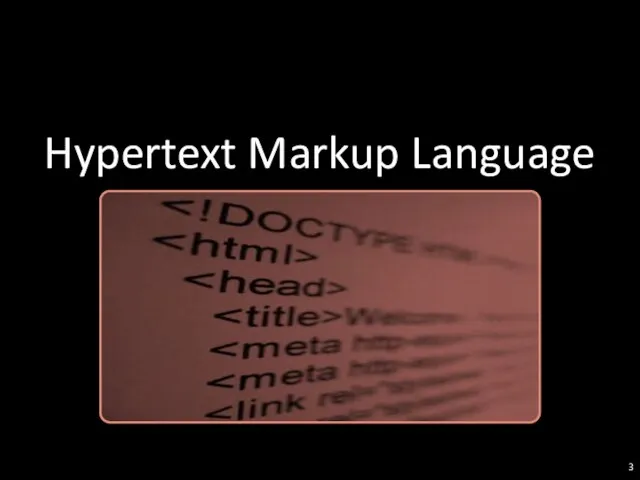


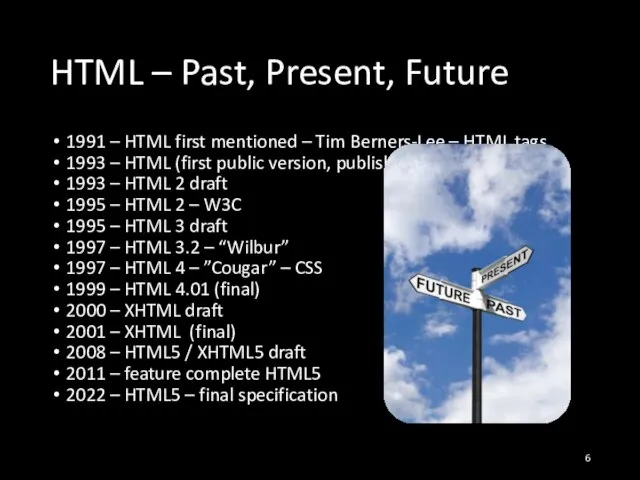
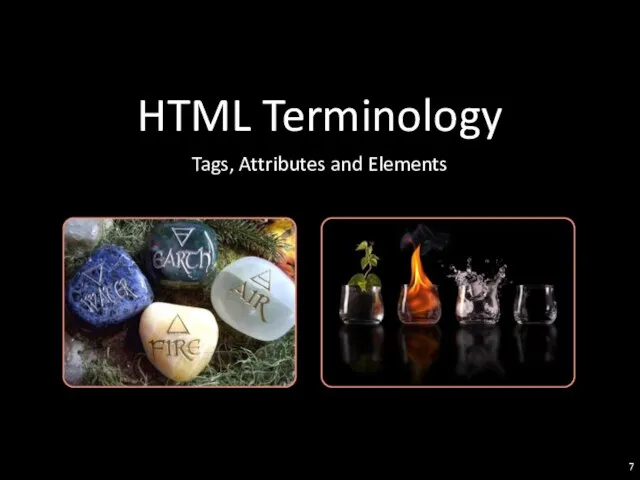
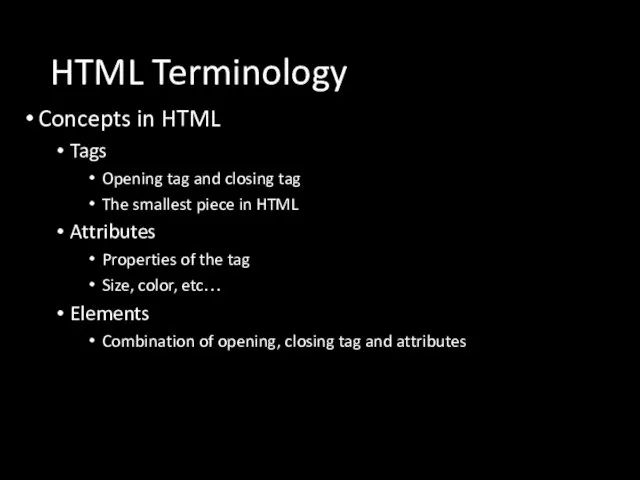
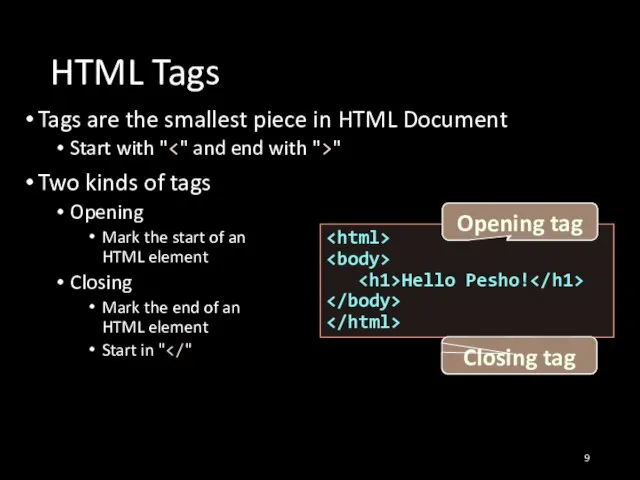
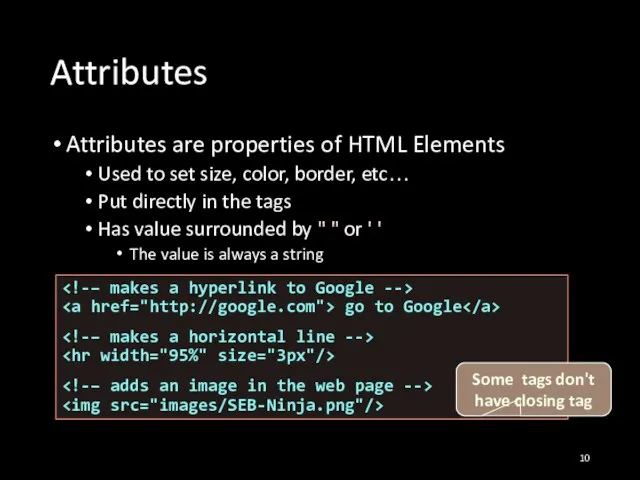

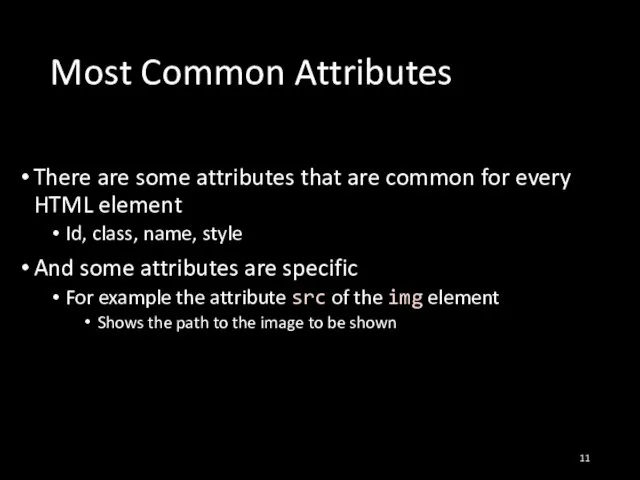
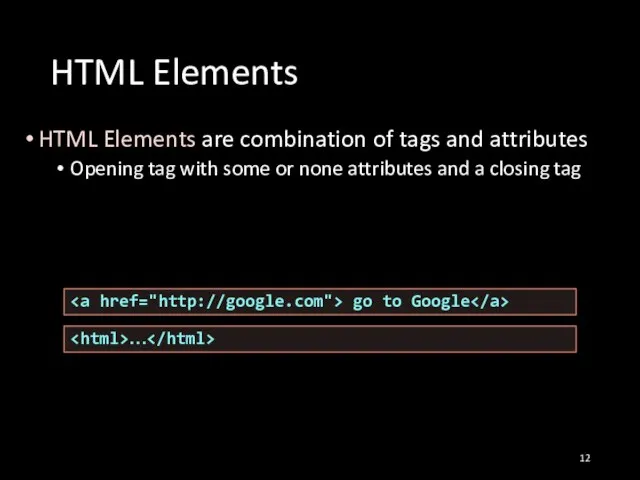
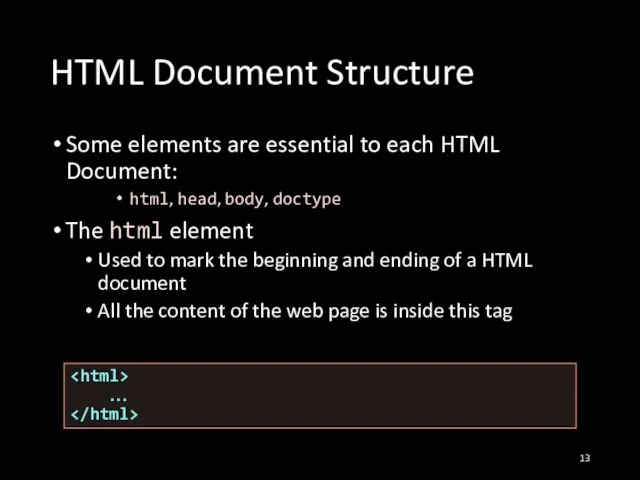
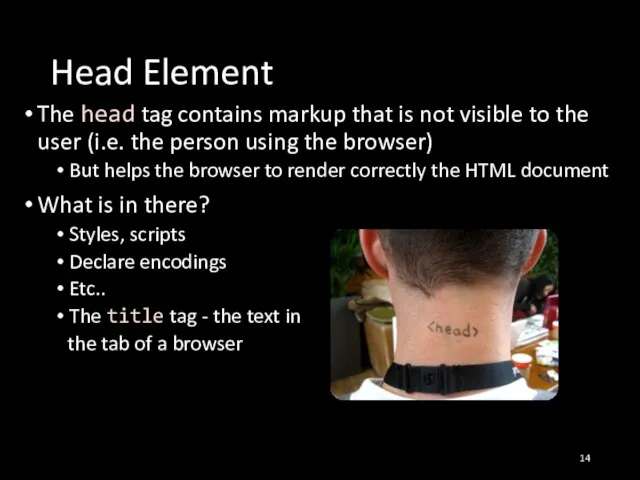
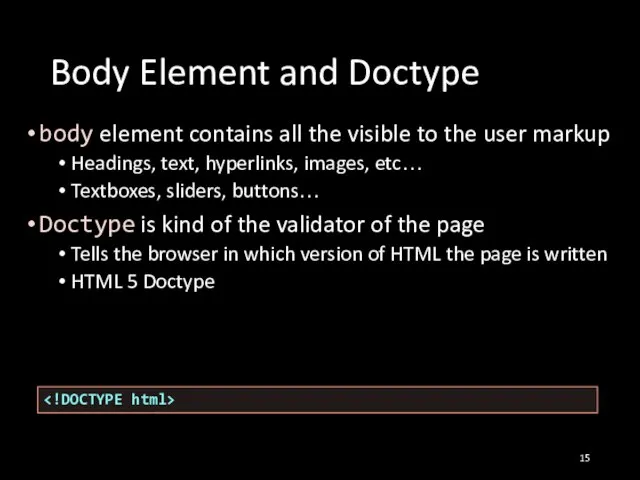
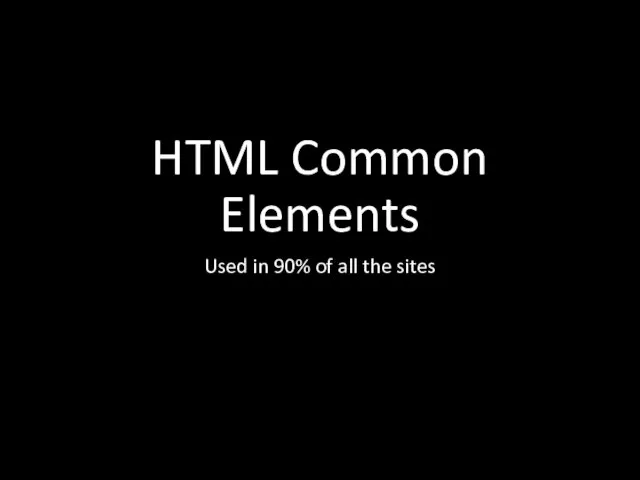
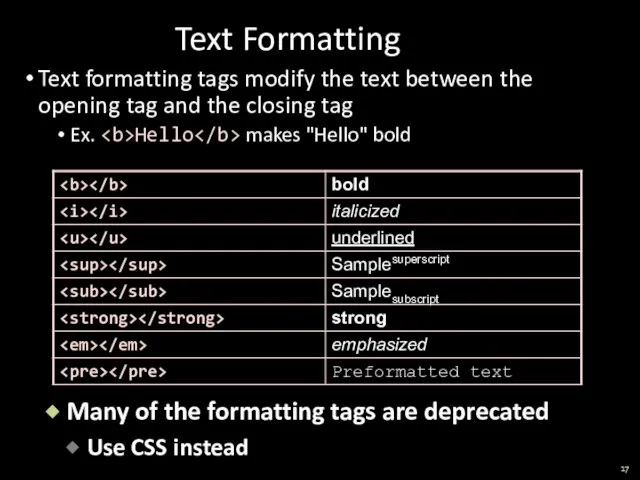
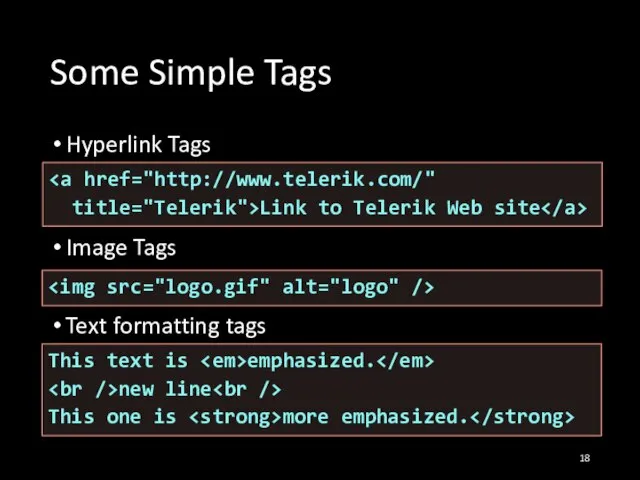

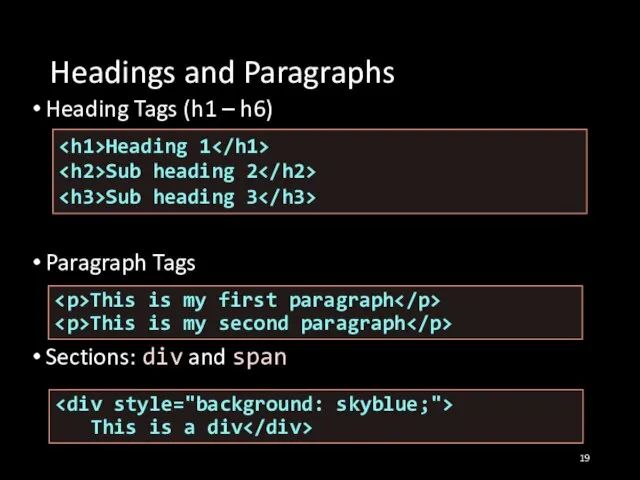
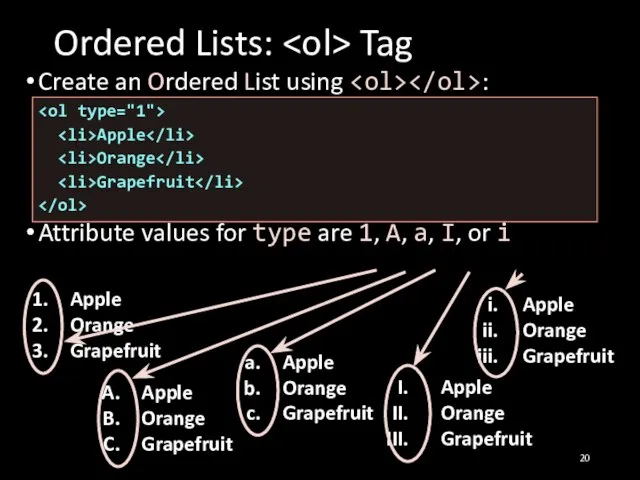
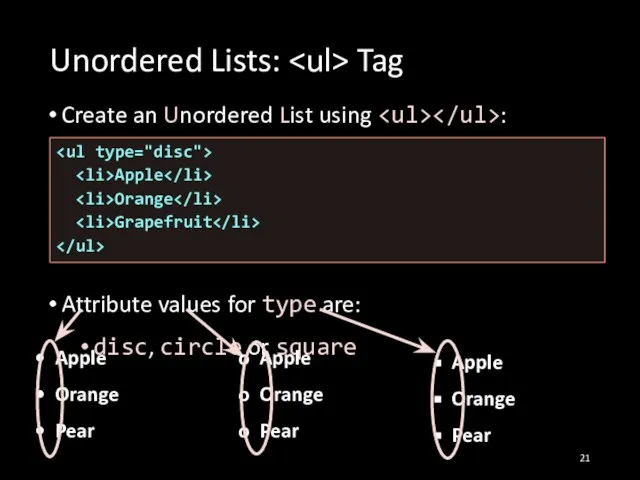
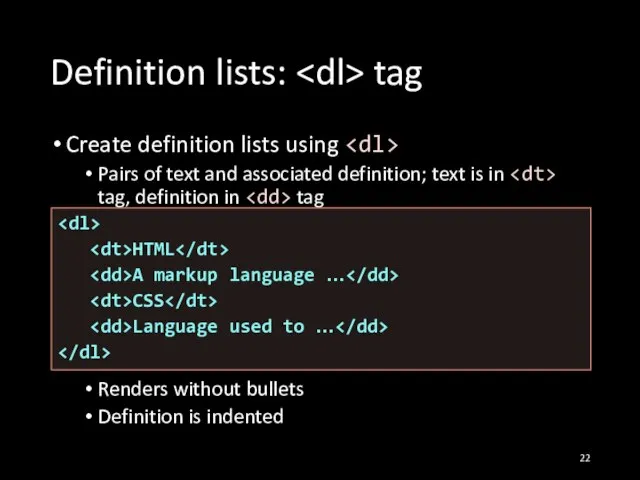
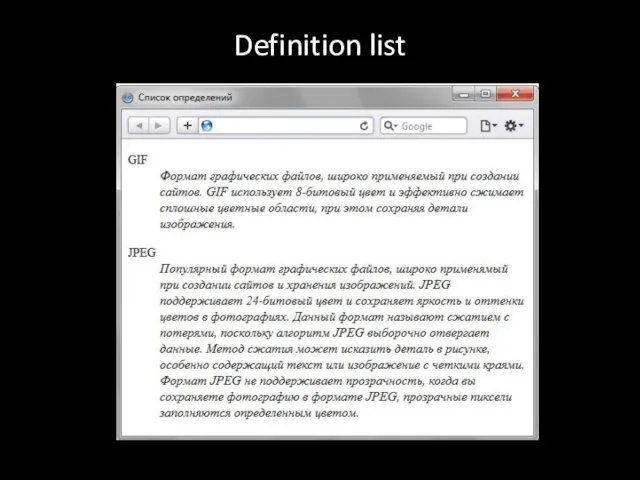
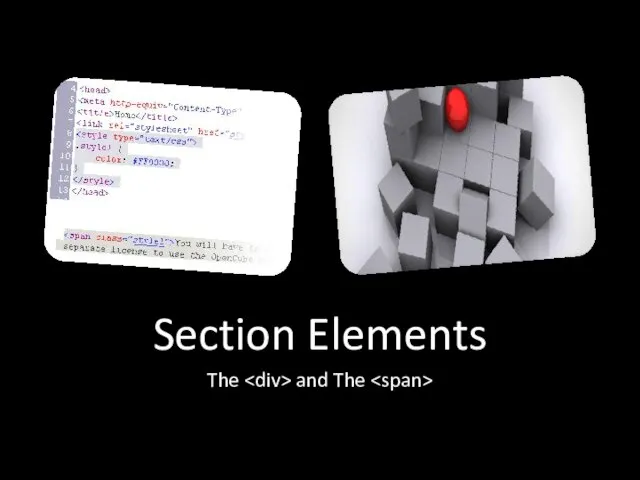
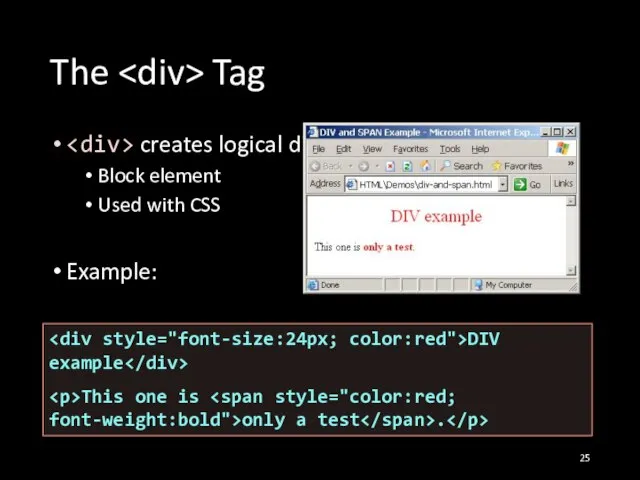
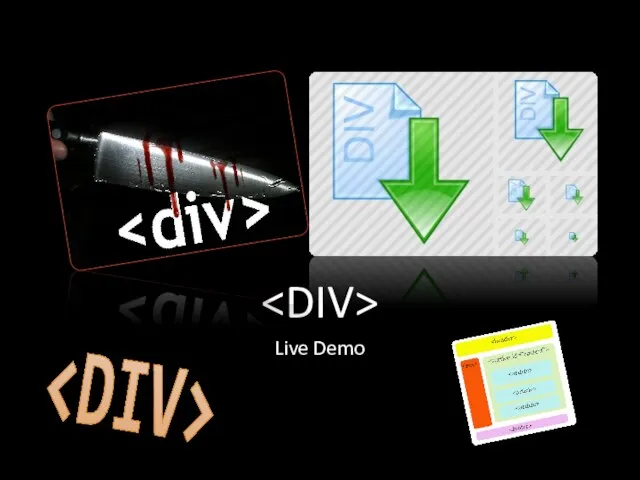
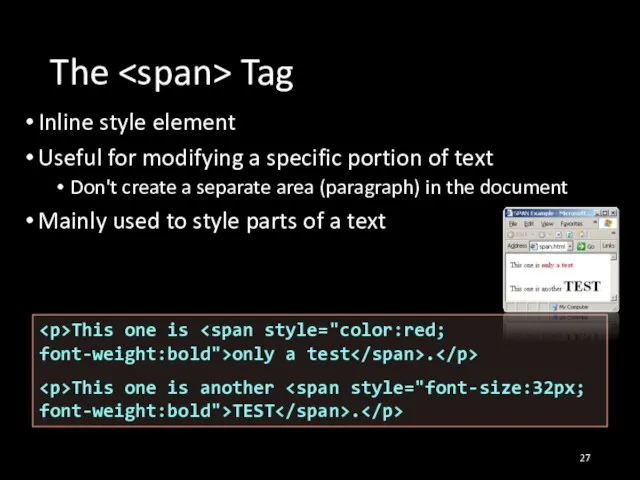

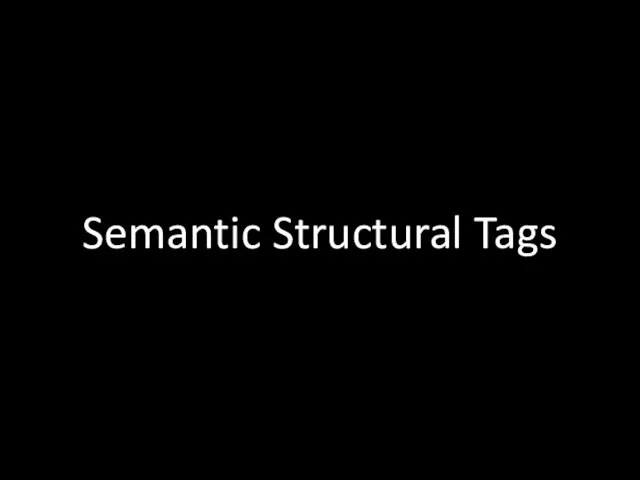
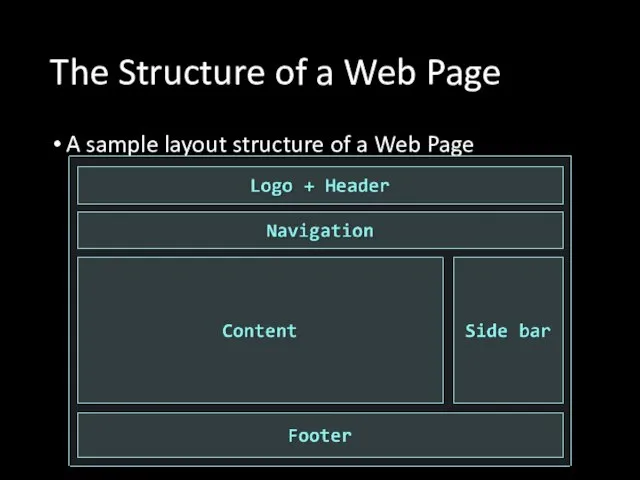
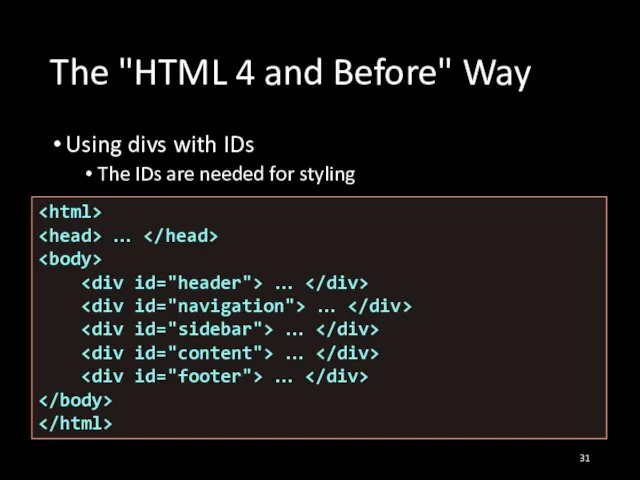
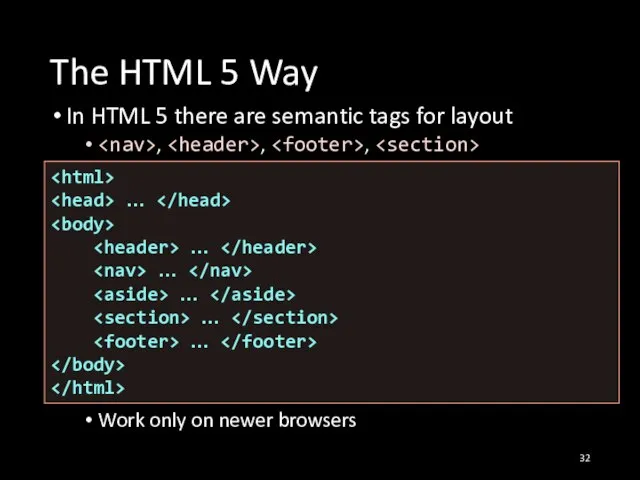
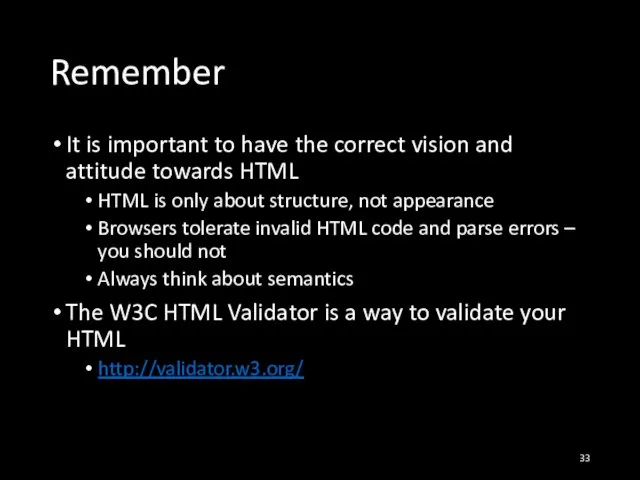
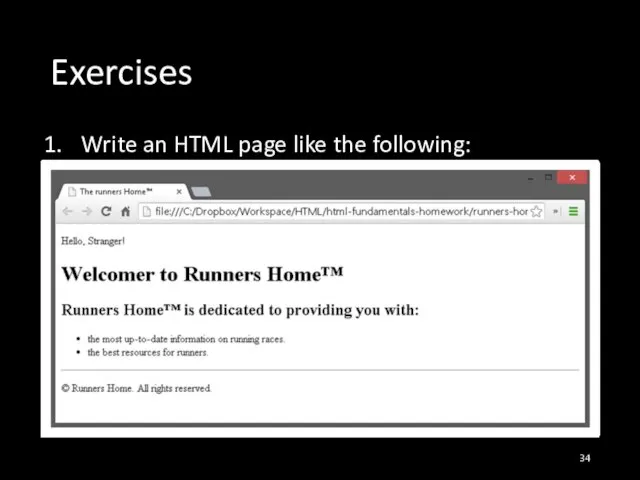
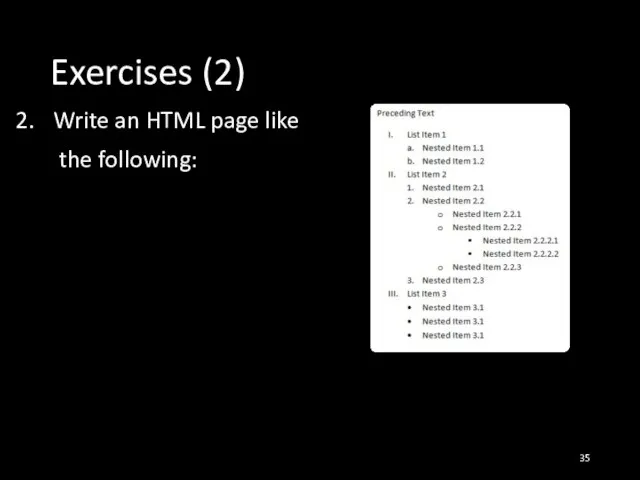
 Ввод данных из диалогового окна в среде Lazarus
Ввод данных из диалогового окна в среде Lazarus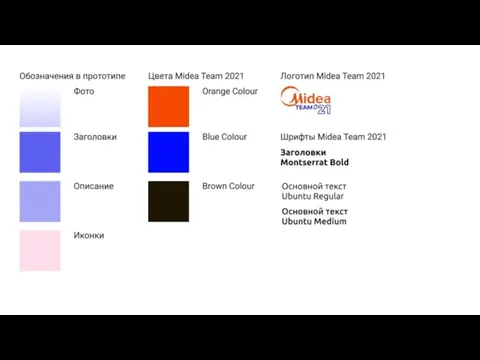 Копирайт и картинки. Midea team 2021
Копирайт и картинки. Midea team 2021 Архитектура операционной системы
Архитектура операционной системы Главное окно (Не редактируемый режим)
Главное окно (Не редактируемый режим) Игра – конкурс по информатике
Игра – конкурс по информатике Провайдер ФАУ МО РФ ЦСКА г. Москва
Провайдер ФАУ МО РФ ЦСКА г. Москва Система памяти ПК
Система памяти ПК Главная страница сайта
Главная страница сайта Использование свободного программного обеспечения для обучения графике
Использование свободного программного обеспечения для обучения графике Свойства логических операций
Свойства логических операций Prezentatsia_EVM
Prezentatsia_EVM Медиабезопасность для детей
Медиабезопасность для детей Персональный компьютер
Персональный компьютер Развлекательная информатика. Игра
Развлекательная информатика. Игра Отдел программирования и автоматизации
Отдел программирования и автоматизации Передача информации по техническим каналам
Передача информации по техническим каналам Организация проектной и научно-исследовательской деятельности обучающихся на базе лаборатории информатики и ИКТ
Организация проектной и научно-исследовательской деятельности обучающихся на базе лаборатории информатики и ИКТ Создание гиперссылок
Создание гиперссылок ООП в . Лекция 3
ООП в . Лекция 3 Обработка информации
Обработка информации SQLite
SQLite Образовательный центр Сириус. Школьный этап всероссийской олимпиады школьников по шести предметам в онлайн-формате
Образовательный центр Сириус. Школьный этап всероссийской олимпиады школьников по шести предметам в онлайн-формате Цифровая трансформация менеджмента
Цифровая трансформация менеджмента Методы работы с источниками информации Неграмотным человеком завтрашнего дня будет не тот, кто не умеет читать, а тот, кто не научи
Методы работы с источниками информации Неграмотным человеком завтрашнего дня будет не тот, кто не умеет читать, а тот, кто не научи Презентация на тему Компьютер и здоровье
Презентация на тему Компьютер и здоровье  Разработка сайта История создания и развития HTML
Разработка сайта История создания и развития HTML Программирование на языке PascalABC. Стандартные функции
Программирование на языке PascalABC. Стандартные функции Нахождение суммы элементов одномерного массива по условию
Нахождение суммы элементов одномерного массива по условию